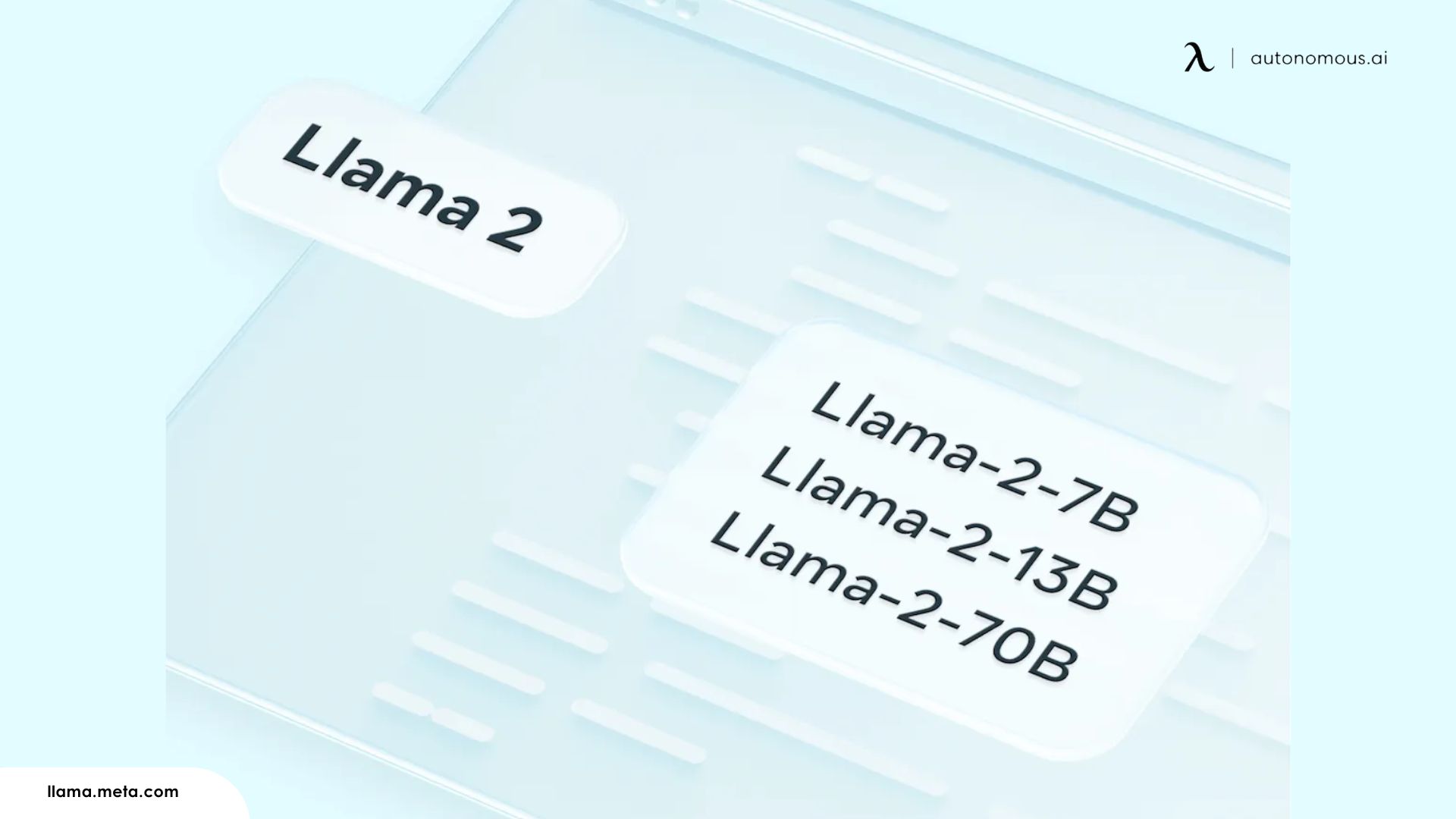
Large Language Model Explained: Definition, Applications, and Best Models
Table of Contents
In recent years, large language models (LLMs) have revolutionized the artificial intelligence (AI) landscape, transforming how we engage with technology. LLMs excel at understanding, generating, and processing human language, enabling a wide range of applications, from content creation to software development. This blog will explore what large language models are, how they work, and why they are essential in the current AI era.
1. Large Language Model Definition
At its core, a large language model is an AI-based system designed to understand and generate natural language. These models use deep learning algorithms, specifically neural networks, trained on vast amounts of text data to learn the structure, grammar, and even cultural nuances of human language. The purpose of LLMs is to predict and generate language that is coherent and contextually appropriate based on input data.
Most LLMs rely on the Transformer architecture, a deep learning framework that enables them to manage long-range dependencies in text effectively. The Transformers allow models like GPT (Generative Pre-trained Transformer) to predict the next word in a sequence of words, producing coherent sentences and paragraphs.
1.1. How Large Language Models Work
LLMs function by taking in vast amounts of textual data to develop a statistical understanding of word patterns, grammar, and context. The training process involves processing text data from sources such as books, websites, and articles, which teaches the model to predict the next word or phrase given a specific input.
Once trained, these models can be fine-tuned for specific applications. For example, an LLM might be trained further on medical literature to improve its performance in healthcare-related tasks. Fine-tuning allows the models to adapt to particular industries and use cases.
1.2. Key Features of Large Language Models
LLMs have several defining features that make them stand out from other types of AI models:
- Scale and Parameters
LLMs are massive in scale, often containing billions or even hundreds of billions of parameters (the weights the model learns during training). The large size of these models allows them to capture complex linguistic patterns, providing high levels of accuracy and fluency in text generation.
- Transformer Architecture
LLMs utilize the Transformer architecture, which excels at managing long-range dependencies in text. This architecture allows models to understand context more deeply by processing multiple words in parallel, rather than sequentially, as was common in earlier models like RNNs (Recurrent Neural Networks).
- Few-Shot and Zero-Shot Learning
LLMs have demonstrated impressive few-shot and zero-shot learning abilities, meaning they can perform new tasks with little or no additional training. This capability enables the models to generalize across various tasks with minimal data.
- Self-Supervised Learning
Instead of relying on labeled data, LLMs are trained using self-supervised learning. This approach allows models to predict missing words in a sentence based on the context, reducing the need for extensive human-labeled datasets.
- Versatility
LLMs can be applied to a wide variety of tasks such as language translation, summarization, sentiment analysis, question answering, and even coding.
2. The Best Large Language Models
Several large language models dominate the AI space, each offering unique capabilities across a wide range of applications. Below are the top 15 models that stand out for their performance, versatility, and impact:
GPT-4 by OpenAI: As one of the most advanced and widely adopted large language models, GPT-4 is renowned for its ability to generate human-like text, solve complex problems, and handle tasks like translation, summarization, and content creation.
LLaMA by Meta: Meta’s LLaMA AI (Large Language Model Meta AI) is an open-source powerhouse. It's designed to provide high performance while remaining accessible to developers and researchers. LLaMA is especially suited for specialized academic tasks.
BERT by Google: BERT (Bidirectional Encoder Representations from Transformers) is well-known for its ability to understand the context of words by considering the words that come before and after them. This makes BERT highly effective for tasks like search engine optimization, sentiment analysis, and question answering.
T5 by Google: The Text-To-Text Transfer Transformer (T5) treats every NLP task as a text generation task. Its versatility across summarization, translation, and classification tasks makes it a top choice for a wide variety of industries.
PaLM by Google: PaLM (Pathways Language Model) is an extremely powerful large language model, designed to handle even more advanced tasks than its predecessors. PaLM pushes the boundaries of scale and is capable of providing deeper insights in natural language understanding.
XLNet by Google/CMU: XLNet enhances traditional autoregressive models by incorporating bidirectionality, allowing it to outperform many earlier models in tasks requiring natural language understanding.
GLaM by Google: GLaM (Generalist Language Model) is a sparsely activated model, meaning only parts of the model are used at a time. It offers excellent performance for a variety of tasks with a lower computational footprint.
Claude by Anthropic: Claude is an AI assistant designed by Anthropic, with a focus on making large language models safer and more interpretable. Its emphasis on ethical AI use makes it an attractive option for developers concerned with model safety.
ERNIE by Baidu: ERNIE (Enhanced Representation through Knowledge Integration) integrates external knowledge into its training, making it highly effective for tasks that require deep understanding and domain knowledge. It's especially useful for tasks in the Chinese language and cross-lingual applications.
Megatron-Turing NLG by NVIDIA and Microsoft: With 530 billion parameters, Megatron-Turing NLG is one of the largest language models ever developed, capable of handling incredibly complex text generation tasks with high accuracy.
Jurassic-1 by AI21 Labs: Jurassic-1 is a flexible large language model with several variations, designed to tackle a wide range of natural language processing tasks. Its API-friendly nature allows developers to easily integrate it into various applications.
OPT by Meta: OPT (Open Pre-trained Transformer) is an open-source model that mirrors GPT-3’s capabilities but offers more transparency and accessibility for developers looking to build on the model or understand its inner workings.
Chinchilla by DeepMind: Chinchilla is a model optimized for compute efficiency, achieving high performance with fewer parameters by training on more data. This approach allows it to outperform larger models like GPT-3 on certain tasks.
Gopher by DeepMind: Gopher specializes in reading comprehension and knowledge retrieval tasks, making it highly effective for research, content summarization, and knowledge management applications.
Bloom by Hugging Face: Bloom is a multilingual, open-source model that supports 59 languages and 13 programming languages. It’s designed for versatility and transparency, making it a popular choice for global applications.
For additional insights into the best AI tools across various applications, check out this curated list of the best AI tools.

3. Large Language Model Applications
The versatility of large language models has enabled them to be adopted across numerous sectors. Some of the most notable applications include:
3.1. Content Creation and Writing
LLMs are extensively used in generating human-like text, whether it's for blog posts, articles, or creative writing. Businesses use AI-powered tools to assist with drafting marketing copy, reports, and product descriptions. If you’re looking for tools that can assist with writing, check out these AI tools for writing.
3.2. Coding and Software Development
Tools like OpenAI's Codex, based on GPT models, allow developers to generate code based on natural language instructions. These tools significantly speed up the development process by automating parts of coding. For more on how AI can help in this domain, explore the top AI tools for coding.
3.3. Paraphrasing and Summarization
LLMs are highly useful for summarizing large texts or rephrasing content in a more concise manner. Tools like these are invaluable for professionals who deal with large volumes of information. If you need an AI tool for paraphrasing, check out these paraphrase AI tools. Similarly, tools that help summarize content can be found here.
3.4. Interactive Chatbots
Chatbots powered by LLMs like GPT-4 and ChatGPT alternatives offer dynamic interactions with users, simulating conversations that can provide assistance, generate content, or answer questions. If you're curious about other AI tools similar to ChatGPT, this guide on ChatGPT alternatives offers some insights.
3.5. Creative Applications
Models like Stable Diffusion allow users to generate images from text, combining the power of visual and textual AI. This multimodal capability can be applied to art, design, and branding. Discover more about the power of Stable Diffusion.

4. Challenges of Large Language Models
Despite their impressive capabilities, LLMs face several challenges:
Bias: LLMs often inherit biases present in their training data, which can lead to biased or harmful outcomes. These biases can range from racial and gender biases to cultural or political biases. Researchers and developers continuously work to mitigate these issues, but eliminating them entirely remains a challenge.
Resource Intensive: Training and deploying LLMs require vast computational resources, which not only makes them expensive but also raises concerns about energy consumption and environmental impact.
Hallucination: LLMs can sometimes generate information that is factually incorrect or fabricated—this is known as "hallucination." This issue can pose problems in high-stakes applications like legal, medical, or financial advice.
Data Privacy: Given the massive amounts of data used for training, ensuring that sensitive or personal information is not inadvertently embedded in the model's responses is a concern. This issue is particularly relevant in industries where data security is crucial, such as healthcare or finance.
5. Limitations of Large Language Models
While LLMs have shown incredible potential, they are not without limitations:
Understanding Context in Niche Domains: Although LLMs excel at general knowledge tasks, they may struggle with highly specialized or niche areas where expert knowledge is required. Fine-tuning is often necessary to adapt the model to domain-specific language.
Long-Term Dependency Issues: Although transformers can manage long-term dependencies better than previous models, they still struggle with very long documents where maintaining context becomes difficult.
Ethical Concerns: The ability of LLMs to generate text that mimics human language raises ethical concerns, especially when it comes to misinformation, deepfakes, or spam content generation. Developers must remain vigilant to prevent misuse.

6. Types of Large Language Models
There are several categories of large language models, each catering to different needs:
- Unidirectional Models
These models predict the next word in a sequence based on the previous words, such as GPT. They are particularly useful for tasks like text generation and auto-completion.
- Bidirectional Models
BERT is an example of a bidirectional model, meaning it looks at the words before and after the target word. This makes it highly effective for understanding context in tasks like sentiment analysis and question answering.
- Multimodal Models
Multimodal models, like Stable Diffusion, can process both text and images, generating visual outputs from textual descriptions. This is particularly useful for creative industries like design and marketing.
- Specialized Models
Some models are designed for specific industries or use cases. For instance, Google Gemma offers flexibility and power for open-source applications, while other models may focus on healthcare or legal tasks.
For more details on the various types of LLMs and their specific use cases, you can explore the AI language models guide.

7. Anon: AI-Driven Collaboration with Privacy at Its Core
As AI evolves, tools that enhance creativity and productivity while protecting privacy are essential. Anon from Autonomous combines AI power with secure, private collaboration, perfect for both startups and enterprises.
Brainstorm with your team and AI friends to generate ideas, solve problems, and streamline teamwork. With AI-powered support, Anon helps deliver smarter solutions and faster ideas in real-time.
- Privacy First: All sessions are stored only in your browser—never on external servers. Autonomous ensures no data is shared with AI providers, making Anon a leader in privacy-focused AI.
- AI-Powered Collaboration: Combine human insights with AI-generated suggestions using the latest open-source models like Llama 3.1 405B, which surpasses ChatGPT in language generation.
- Versatility: From creating images and writing code to analyzing data, Anon enhances collaboration across multiple domains.
- Open-Source AI: Anon uses verifiable, flexible AI models with no vendor lock-in, ensuring data protection and adaptability.
With Anon, enjoy AI-driven teamwork and total control over your data. Get started for free and experience the power of secure, intelligent brainstorming.
8. Conclusion
Large language models are at the forefront of AI innovation, transforming the way we generate, interact with, and process language. From improving content creation to revolutionizing software development, their applications are vast and impactful. As these models continue to evolve, their influence will only grow, opening new doors for industries and professionals alike.
For educators seeking to enhance their classrooms, AI tools tailored for teaching are becoming increasingly valuable. Explore the best AI tools for teachers and educators to see how they can support lesson planning, grading, and personalized student feedback. Similarly, professionals who work with spreadsheets can streamline their workflows by using AI tools for Excel, enabling data analysis and reporting like never before.
Stay connected with us!
Subscribe to our weekly updates to stay in the loop about our latest innovations and community news!
Interested in a Link Placement?
Spread the word
.svg)
.svg)




/https://storage.googleapis.com/s3-autonomous-upgrade-3/production/ecm/230914/bulk-order-sep-2023-720x1200-CTA-min.jpg)

/https://storage.googleapis.com/s3-autonomous-upgrade-3/production/ecm/230824/image_2Qy8RvXi_1692156220697_raw-0545aba5-ec71-4736-8a0d-b290d04efd58.jpg)